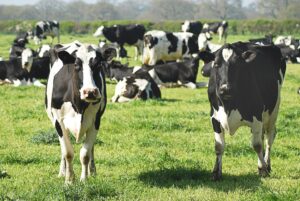 Picture: cc @Doug88888 |
|
As a reader of Watch This! you will be well aware of the numerous problems the European Union Emissions Trading Scheme faces in terms of windfall profits for polluting companies, increased emissions, and delaying the move towards a low-carbon infrastructure. You may also agree that its failures are inherent and show the limitations of relying on a ‘price’ to lower emissions. Unfortunately, the same logic is now being applied to other areas of nature.
  FERN works to achieve environmental and social justice with a focus on forests and forest peoples’ rights in the policies and practices of the European Union. www.fern.org Contact: Hannah@fern.org |
The EU’s 2020 Biodiversity Strategy shows that the EU remains keen to rely on market-based instruments to regulate environmental problems, in this case, biodiversity loss. Target 2 of this strategy mentions the launch of a ‘No Net Loss Initiative’. Internationally, there is increasing interest to rely on offsets to fund conservation work, as was discussed with the Green Development Mechanism under the Convention for Biological Diversity (CBD).
The idea behind ecosystems offsetting is that despite continued development and land-use change, there is no net loss of ecosystems, or even a net gain. Specialised companies create, restore, or avert the loss of ecosystems. These are then calculated in terms of numbers of credits and either sold directly to developers who have destroyed a similar ecosystem or kept as a ‘habitat bank’ to offset future destruction.
The theory is that price is used to regulate ecosystems loss, since precious ecosystems would, in theory, be more expensive to offset, their destruction would therefore be avoided. But the EU ETS has already shown what happens when the price is too low. As biodiversity and the use of public spaces are inherently unique, can the market really decide which parts of nature should be damaged if the price is high enough? If companies simply build in the price of causing damage where previously it has been outlawed by regulation, when does legislation step in again? Though offset proponents propose a mitigation hierarchy, in which damage is avoided and minimised before it is offset, very little detail is given about this. In countries that allow ecosystem offsetting, the predominant focus is on offsetting and scant regard given to avoidance and minimization.
This also raises issues of what is being offset? Most ecosystem offsetting schemes measure offsets in terms of hectares lost, but do not take into consideration the impact of that loss on local communities or the cultural landscape, which cannot be offset. Research in countries where biodiversity offsetting already exists – Australia, USA, Germany – shows offsets have caused the displacement of nature away from local communities, and that there is a lack of monitoring. Studies in Illinois showed that 67% of all offsets did not reach their target condition.
Attempts to harness the market have been disastrous for global attempts to reduce emissions and misguided attempts to use the same mechanism to save biodiversity should be halted before they have a similarly negative effect.
Read more from Watch This! NGO Voices on Carbon Markets #5







